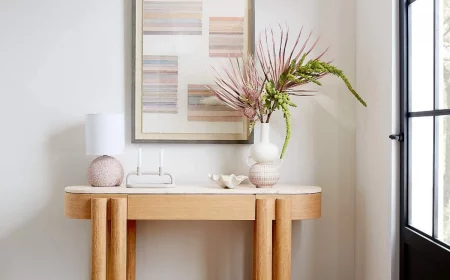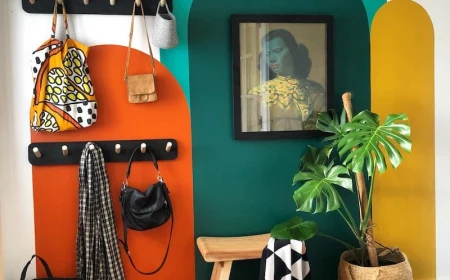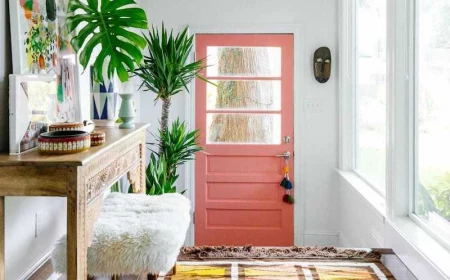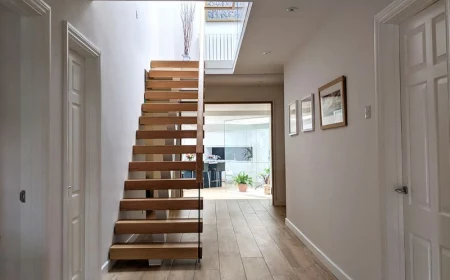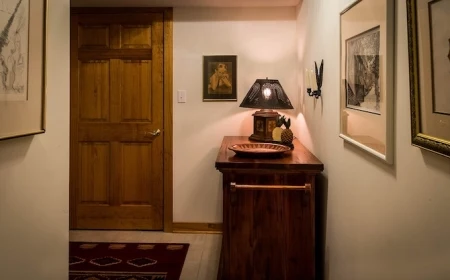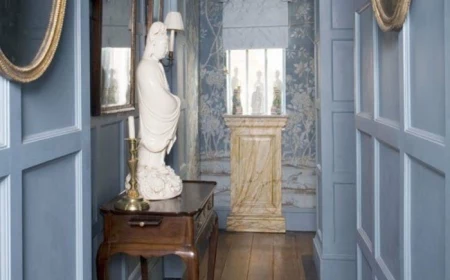Your Entryway Light is the First Handshake. Make it a Good One.
You know, after years spent as an electrician and lighting consultant, I can tell you one thing for sure: a bad entryway light can ruin a first impression faster than anything else. I’ve seen it all—gorgeous homes with a two-story foyer lit by a single, sad, dim bulb. And on the flip side, I’ve seen terrifyingly heavy chandeliers dangling from a standard ceiling box, just waiting to make a mess of that beautiful floor.
In this article
Your entryway light does more than just help you find your keys. It’s the first “hello” your home gives a guest. It sets the entire mood, keeps you from tripping over your shoes, and tells a story about who lives there. It’s a detail that absolutely deserves more than a five-minute glance online.
So many people just buy a fixture because it looks pretty. They fall in love with a style and click “buy” without a single thought about scale, brightness, or how in the world they’re going to install it. And that, my friends, is how you end up with a fixture that’s comically small, overwhelmingly huge, or just plain useless. Getting it right isn’t rocket science, but it does take a little planning. Let’s walk through it, and I’ll share what I’ve learned from hundreds of jobs so you can pick a light that feels like it was made for your home.
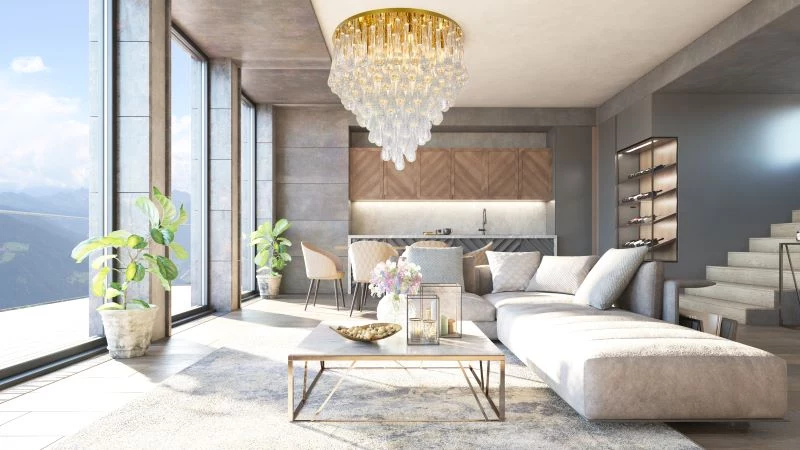
First, Let’s Talk About the Actual Light
Before we even get to the pretty stuff, we need to get a handle on the technical side of light. This isn’t boring, I promise. Nailing these three things is what makes a space feel either welcoming or like a hospital waiting room.
1. Lumens (How Bright Is It?)
Forget about watts. Watts just measure how much energy a bulb uses. What you really care about is lumens, which tells you how much light it actually puts out. For a small, standard entryway, you’ll probably want something in the 1,000 to 2,000 lumen range. For a bigger, two-story foyer, you should be looking for 2,000 to 4,000 lumens, maybe even more. Heads up: if you have dark walls, they’re going to soak up light like a sponge, so you’ll need more lumens to get the same level of brightness as a room with light, reflective walls.
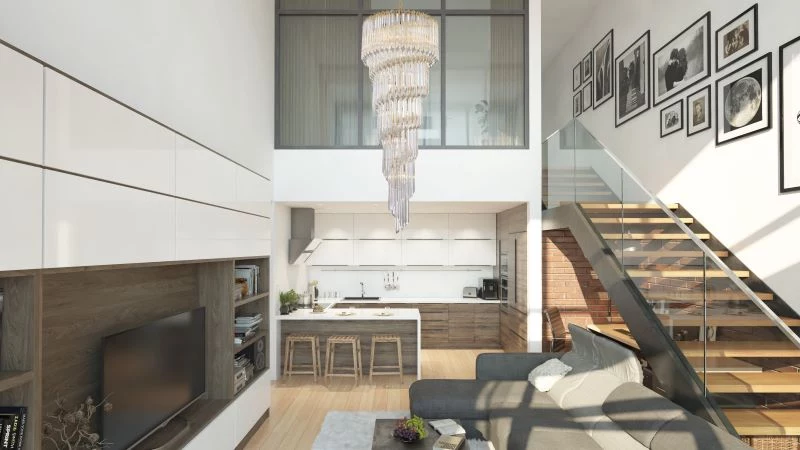
2. Kelvin (What Color Is It?)
This is a big one. Kelvin (K) is all about the color of the light, and it’s the number one factor in setting the mood. Lower numbers (around 2700K) give off a warm, cozy, yellowish-white light. Higher numbers (4000K and up) produce a cool, blue-white light that feels more like daylight. For an entryway, I almost always recommend sticking between 2700K and 3000K. This is often labeled “soft white” or “warm white,” and it just makes people feel welcome and relaxed. Save that 5000K daylight bulb for your garage or workshop, where you need to see every detail.
QUICK WIN: Seriously, go check the bulb in your entryway right now. If it’s giving off a harsh, cool light, go spend $10 on a new 2700K LED bulb. You can find them anywhere, from Home Depot to Amazon. Swapping it will take you two minutes and will instantly make your entrance feel warmer tonight.
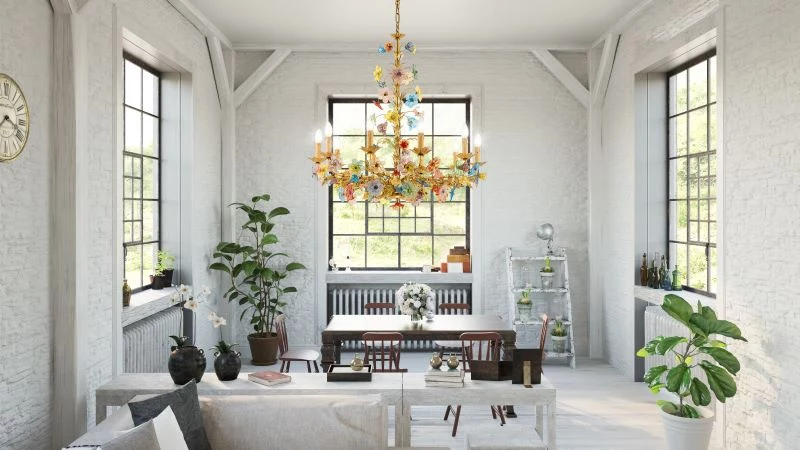
3. Color Rendering Index (CRI)
Last but not least is CRI, a scale from 0 to 100 that measures how accurately a light shows you true colors. I learned this one the hard way. A client called me, frustrated that their brand-new red front door looked weirdly orange at night. The paint was fine; the problem was the cheap LED bulbs they used, which had a terrible CRI. For your home, always, always look for bulbs with a CRI of 90 or higher. It ensures your wall colors, art, and even your own skin tone look natural and vibrant.
How to Pick a Fixture That’s the Right Size
Okay, this is where most people mess up. A dinky light gets lost in the space, and a monster light makes the ceiling feel like it’s about to fall on you. The pros use a couple of simple formulas to get the scale just right. They aren’t strict laws, but they’re a fantastic starting point.
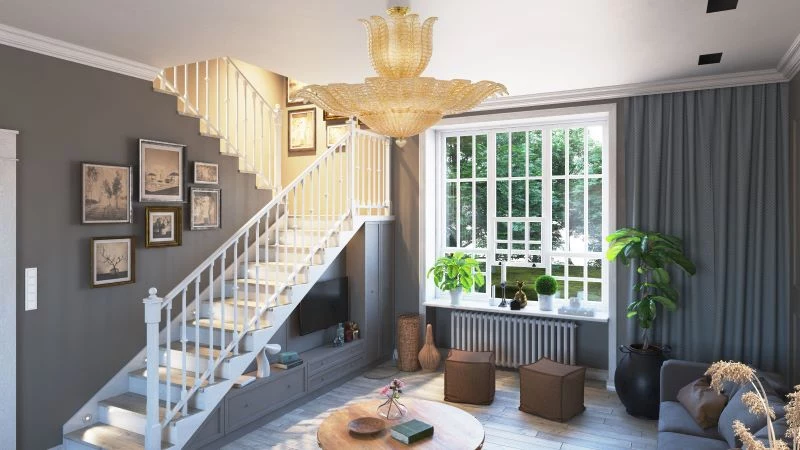
Finding the Right Width
Go grab a tape measure. Let’s do this right now. Measure the length and width of your foyer in feet. Now, add those two numbers together. That sum is the rough diameter your light fixture should be, in inches. Simple as that.
So, if your foyer is 12 feet wide by 14 feet long:
12 + 14 = 26
You should be shopping for a fixture that’s around 26 inches wide. Write that number on a sticky note and put it on your computer. Now you won’t be tempted by that tiny 12-inch pendant that would look ridiculous.
Getting the Height and Clearance Right
The bottom of your fixture needs to be high enough for people to walk under it. The golden rule is to have at least 7 feet of clearance from the floor. If you have a standard 8-foot ceiling, a hanging chandelier is probably out of the question. You’ll be much happier with a flush-mount or semi-flush-mount light. A semi-flush hangs a few inches down, giving it a bit more personality than a basic flush mount while still keeping your headroom safe.
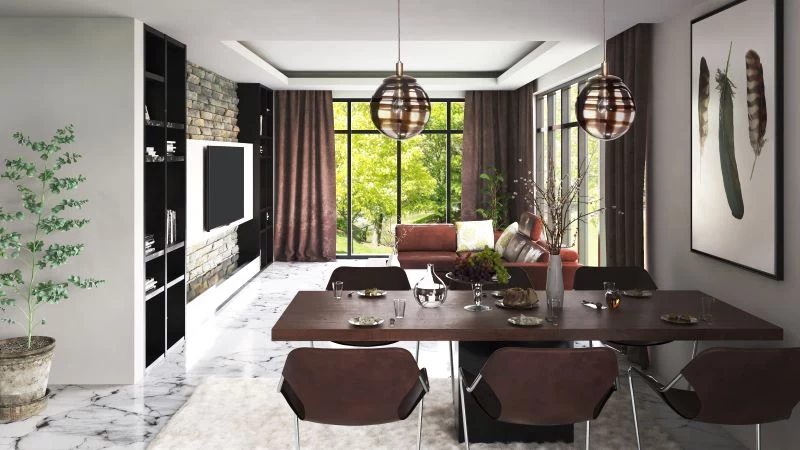
Got a Two-Story Foyer?
High ceilings are a whole different ballgame. They need a big, substantial fixture to fill all that vertical space. While the 7-foot clearance rule still applies, you also have to think about what it looks like from the second floor. A great guideline is to hang the fixture so its bottom is level with the second-floor landing. That way, it’s a beautiful feature for both levels.
Oh yeah, and don’t forget to look from the outside! If you have a window above your front door, that chandelier should be perfectly centered in it. It creates an incredible, grand look from the street. I often hang a fixture temporarily with rope so the homeowner and I can move it up and down until it looks perfect from every single angle.
Choosing Your Style (and Materials!)
Now for the fun part. Once you know your size and light specs, you can pick a style that complements your home. A sleek, modern light might look a little weird in a traditional home, so try to match the fixture’s vibe to your home’s architecture.
Here’s a quick rundown of your main options:
-
Flush & Semi-Flush Mounts: These are the workhorses for standard 8-foot ceilings. A basic flush mount can cost as little as $50, while a more stylish semi-flush might run you $100 to $400. Most are pretty DIY-friendly if you’re just swapping an old fixture.
-
Pendants: A single pendant is a fantastic choice for a standard entryway, and a row of two or three looks amazing in a long, narrow hall. They come in every style imaginable, from glass globes to metal lanterns.
-
Chandeliers: The classic choice for a grand entrance. They work best with ceilings 10 feet or higher and serve as a major design statement. Budget-wise, they’re all over the map, from $300 at a big box store to $3,000+ from a high-end brand like Rejuvenation. A heads-up: these can be heavy, so installation is almost always a job for a pro.
-
Sconces: These are perfect for adding layers of light. They can flank a doorway or highlight a piece of art. I usually mount them so the center of the light is about 60 to 66 inches from the floor—roughly eye level. They typically cost between $75 and $500 each, and you’ll want an electrician to hardwire them.
By the way, a common mistake is buying a fixture with an opaque, solid shade that only shines light down. This creates a spotlight effect on your floor and can make the whole space feel darker and the ceiling feel lower. Look for fixtures that cast light in multiple directions for a more even, pleasant glow.
And please, think about materials. I’ve seen so many people grab a cheap, plated-steel fixture that looks great out of the box but starts to rust in a year or two. If you can, invest in solid brass or bronze. They cost more upfront but will literally last a lifetime. If you’re on a budget, you can find decent options at places like Lowe’s or Home Depot, but for something with more unique style and quality, check out stores like Schoolhouse.
When to DIY and When to Call a Pro
I can’t say this enough: electrical work is serious business. If you have even a shadow of a doubt, please hire a licensed electrician. It’s just not worth the risk. An installation for a simple fixture swap might run you $150 to $300. But if you need a pro to install a new, properly braced box for a heavy chandelier in a two-story foyer, that could be a $800+ job—and worth every penny for the peace of mind.
If you are comfortable with a basic swap, here’s your essential toolkit:
- A non-contact voltage tester (about $15, and non-negotiable)
- Phillips and flathead screwdrivers
- Wire strippers
- A sturdy step-ladder
Before you do anything, turn off the power at the breaker box. Not just the wall switch! Then, use that voltage tester to double-check that the wires are dead. It’s a simple habit that can save your life.
And about that fixture weight… A standard ceiling box is only rated to hold 50 pounds. A lot of chandeliers weigh more than that. Honestly, unless you installed the box yourself or can clearly see “fan-rated” stamped on it, you have to assume it’s a standard 50-pound box. Don’t guess. Installing a 75-pound fixture on one of these is how you get a chandelier crashing down on your floor. It happens.
Finally, only buy fixtures that have a UL or ETL mark on them. It’s a little sticker that means the product has been tested for safety. If it doesn’t have one, don’t buy it. It’s not worth the risk to your home.
Going From Good to Great
Want to really elevate the space? It’s all about layers and control.
A single overhead light can feel flat and create harsh shadows. The best designs use layers: an overhead chandelier for general (ambient) light, a sconce to highlight some art (accent light), and maybe a small table lamp on a console table for sorting mail (task light). It just makes the room feel more complete.
And if you do only one upgrade, make it a dimmer. A dimmer switch is the best tool ever for controlling mood. You can have the lights bright when guests arrive, then dim them down for a relaxed evening glow. Just be sure to get a dimmer that’s specifically rated for LED bulbs if that’s what you’re using, otherwise you’ll get annoying flickering and buzzing.
Smart controls are also getting cheaper and more reliable. Programming your lights to turn on before you get home is a little luxury that makes a big difference. Plus, it’s a great security feature when you’re away.
Choosing the right light is an investment, but it’s one you’ll appreciate every single day. Take your time, do your homework, and when in doubt, call in a pro. That moment you walk through your front door and are greeted by the perfect, welcoming light? That’s a feeling you just can’t beat.
Inspirational Gallery
Don’t just eyeball the size of your fixture. There’s a simple designer’s rule to get the scale just right for your space:
- Measure the length and width of your entryway in feet.
- Add those two numbers together.
- The result is the ideal diameter for your light fixture in inches.
So, for a 10-foot by 12-foot foyer, you’d look for a fixture around 22 inches in diameter. It’s a fantastic starting point to avoid a light that’s comically small or overwhelmingly large.
The single most important upgrade for any entryway light: A dimmer switch. It’s not a luxury; it’s a necessity. It allows you to shift the mood from a bright, welcoming beacon for guests to a soft, ambient glow for quiet evenings. It’s the difference between functional lighting and atmospheric lighting. Ask your electrician to install a quality dimmer, like one from Lutron’s Caséta line, for smooth, flicker-free control.
A study published in the ‘Journal of Consumer Psychology’ found that exposure to warm-colored lighting can lead to feelings of relaxation and positive emotional responses.
This is precisely why the color temperature (Kelvin) of your entryway bulb matters so much. Aiming for a warm white light (around 2700K to 3000K) isn’t just a design choice—it’s a psychological cue that tells everyone who enters,
Wondering how to make your entryway feel welcoming before you even step inside?
The answer is a smart bulb. By swapping your standard bulb for one from a system like Philips Hue or Wyze, you can set schedules and automations. Program your light to turn on automatically at sunset so you never come home to a dark house again. Even better, use your phone’s location to have it switch on as you pull into the driveway, creating a seamless and secure welcome every single time.
Don’t let your ceiling fixture do all the work alone. The best-lit entryways practice layering. If you have a console table, add a small, sculptural table lamp. Its lower, softer light creates intimacy and eliminates harsh shadows. Have a long, narrow hall? A pair of elegant wall sconces can guide the way while adding architectural interest. The main fixture provides the general light, while these secondary sources add warmth and character.
- It introduces an organic, textural element.
- It diffuses light beautifully for a soft, inviting glow.
- It instantly adds a relaxed, well-traveled vibe.
The secret? Woven fixtures. Pendants made from rattan, seagrass, or bamboo are having a major moment. They’re a perfect way to bring a touch of natural, bohemian, or coastal style right to your front door, and they work surprisingly well as a soft counterpoint in more modern spaces.
For ceilings under 9 feet tall, the choice often comes down to two options:
Flush Mounts: These fixtures sit directly against the ceiling. They are the ultimate space-saver, perfect for very low ceilings (under 8 feet) or in high-traffic areas where you need maximum headroom.
Semi-Flush Mounts: These hang a few inches down from the ceiling on a short stem. That small gap allows light to spill out across the ceiling, creating a more ambient, spacious feel and often a more decorative look.
If you have the clearance, a semi-flush mount usually offers a more dynamic and stylish result.
The bottom of a hanging light fixture in a main entryway or hallway should be at least 7 feet (84 inches) from the floor.
This isn’t just an aesthetic guideline; it’s a practical safety rule to ensure even your tallest guests don’t bump their heads. For a grand, two-story foyer, the fixture should hang low enough to feel connected to the ground floor space but high enough to be seen from the second-floor landing.
Your light fixture should speak the same language as your home’s architecture. Before you fall for a trendy piece, consider your home’s bones. A classic Colonial or Cape Cod home is beautifully complemented by a traditional brass or black lantern. A Mid-Century Modern ranch calls for a sculptural sputnik or an atomic-style fixture. For a modern farmhouse, consider a minimalist barn light or a fixture with aged iron and wood accents. Harmony between the fixture and the home creates a truly timeless first impression.
Did you know? An ENERGY STAR-rated LED bulb can last up to 25,000 hours. That’s over 22 years if you use it for three hours a day.

